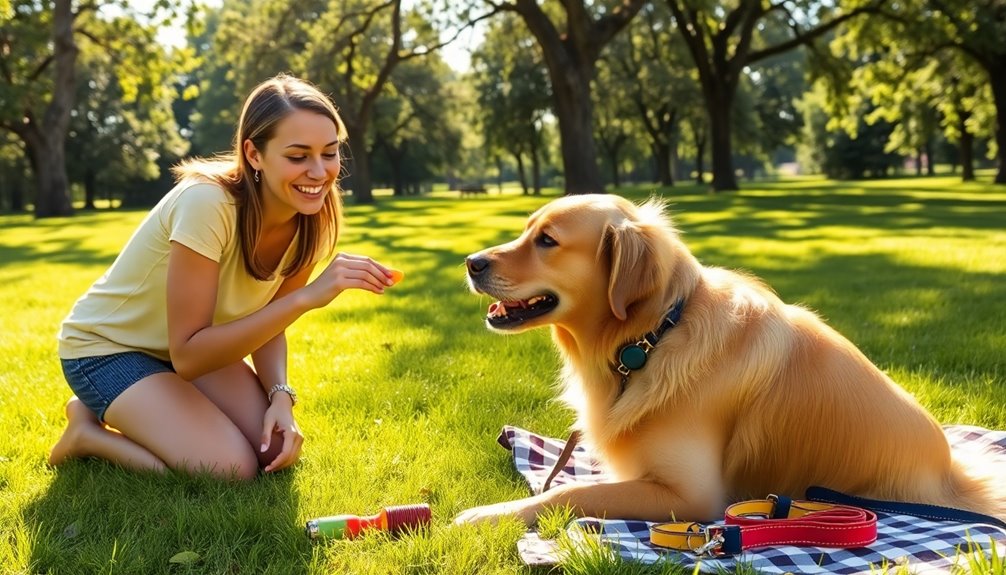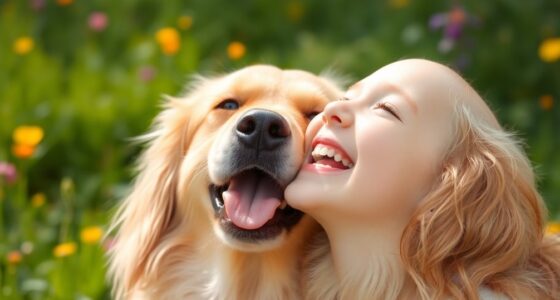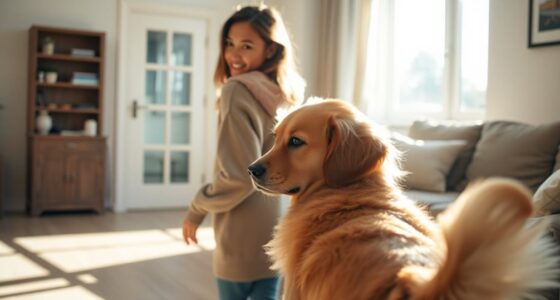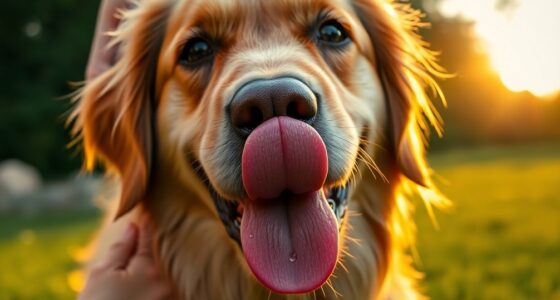To train your dog effectively, focus on positive reinforcement and consistency. Reward good behavior immediately with treats, praise, or playtime, and keep training sessions short to maintain attention. Make sure everyone at home uses the same commands to avoid confusion. Experiment with different rewards to find what motivates your dog best, and mix them up to keep things interesting. Socializing your pup early helps reduce anxiety. Remember to be patient and persistent in your training efforts. There's so much more you can explore to enhance your training experience and strengthen your bond with your furry friend.
Key Takeaways
- Utilize positive reinforcement by rewarding good behavior with treats, praise, or playtime to strengthen desired actions.
- Maintain consistency in commands and training techniques across all household members to avoid confusion.
- Tailor and vary rewards based on your dog's preferences to keep training sessions engaging and effective.
- Focus on early socialization to help your puppy adapt to new experiences and reduce anxiety in different settings.
- Keep training sessions short, around 5 minutes, to maintain your dog's attention and enhance learning.
Positive Reinforcement Techniques
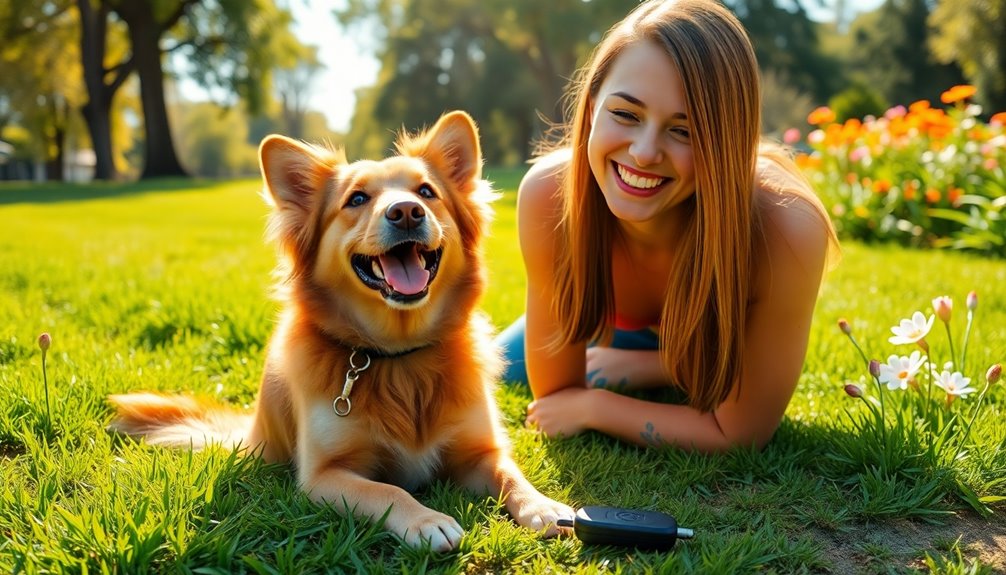
When it comes to training your dog, positive reinforcement techniques are a game changer. By rewarding your dog for good behavior, you create a strong connection between their actions and positive outcomes. This method is widely endorsed by veterinarians and can greatly enhance your training sessions.
Timing is vital, so make sure to reward immediately after your dog performs the desired behavior. Consistency is essential too; using the same commands and reinforcement methods helps prevent confusion.
Also, remember that effective rewards can be food, praise, or playtime, so choose what your dog loves most. Incorporating fun elements into training sessions keeps your dog engaged, making learning enjoyable and effective for both of you.
Finding the Right Reward
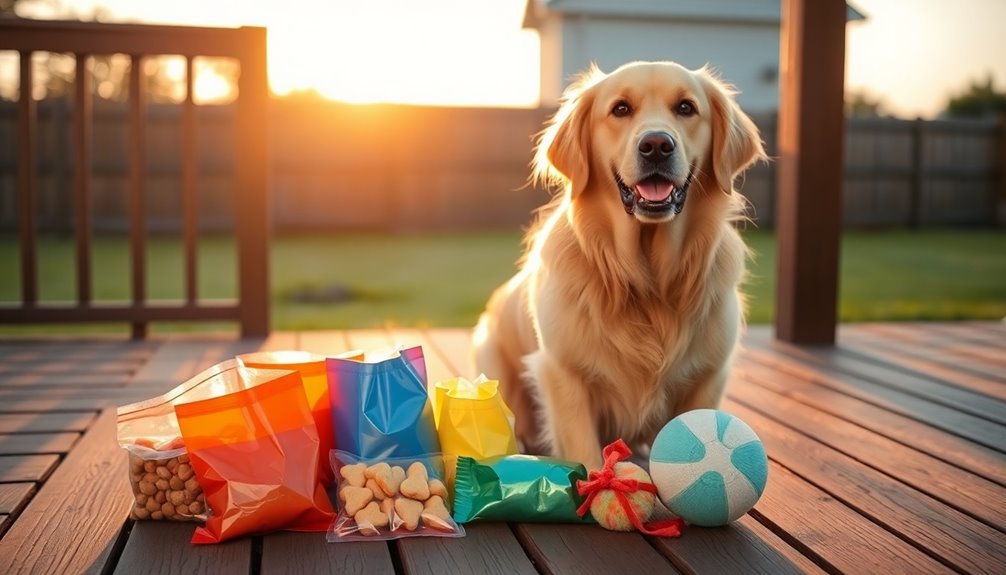
Finding the right reward for your dog can greatly impact their training success. Dogs respond differently to various rewards, so experiment with treats, toys, or playtime to discover what truly motivates your pup.
Establishing a hierarchy of rewards can also be effective; use lower-tier rewards for simple tasks and save higher-tier ones for more challenging situations. Observing your dog's preferences and tailoring rewards accordingly enhances their learning experience.
Combining treats with verbal praise or physical affection reinforces desired behaviors and makes dog training more enjoyable.
Finally, regularly vary the types of rewards to keep sessions fresh and engaging. This approach will help maintain your dog's motivation and enthusiasm to learn through positive reinforcement.
Importance of Consistency

Using the right rewards is only part of successful dog training; maintaining consistency is equally important. Consistency in commands and cues helps your dog understand what you expect, reducing confusion.
Make sure everyone in your household uses the same verbal cues and commands to create a unified training approach. This clarity is vital for your dog's success. Inconsistent reinforcement can undermine your efforts, leaving your dog unsure of which behaviors are desirable.
Stick to the same phrasing and intonation when giving commands, as this aids quicker comprehension. To enhance your dog's learning experience, consider posting a list of commands in a visible area. This will help everyone stay on the same page and reinforce effective training.
Effective Training Methods
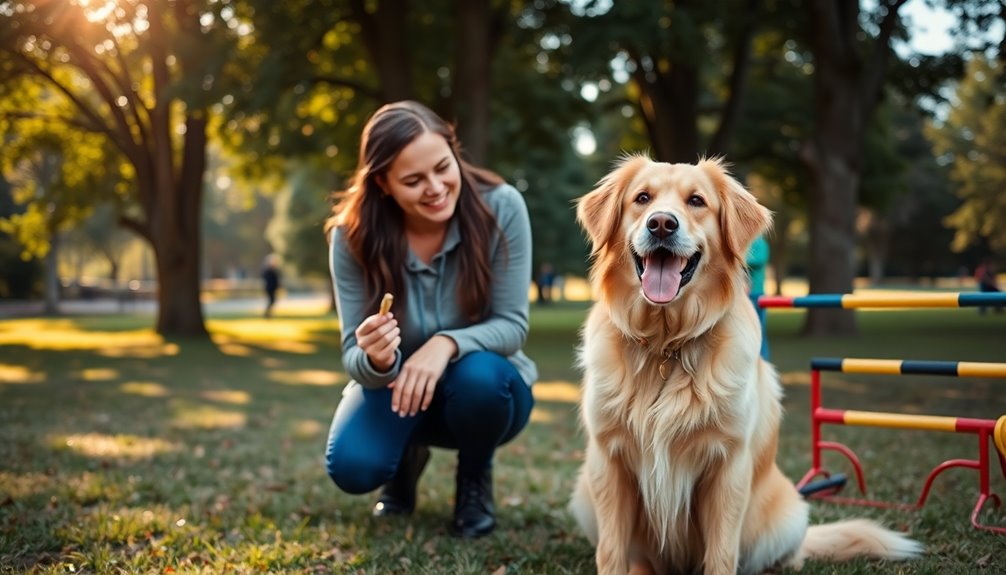
Effective training methods can make all the difference in how quickly your dog learns and retains commands. Focus on positive reinforcement by rewarding your dog with treats or praise immediately after they exhibit desired behaviors.
Keeping training sessions short—around 5 minutes—helps maintain your dog's attention and prevents frustration. Consistency is key; guarantee everyone in your household uses the same commands and techniques to avoid confusing your dog.
Mix up your rewards, using toys and playtime to keep training engaging and tailored to your dog's preferences. As your dog becomes more comfortable, gradually increase the complexity of commands and introduce distractions.
This approach helps build an effective dog that can generalize learned behaviors, reducing unwanted behaviors in various environments.
Making Training Enjoyable

To make training enjoyable for both you and your dog, incorporate playtime sessions into your routine.
Using engaging tricks can add fun and strengthen your bond, while varying training activities keeps things fresh and exciting.
Incorporate Playtime Sessions
When you incorporate playtime sessions into your dog's training, you not only boost their engagement but also make the learning process more enjoyable for both of you.
By mixing training with fun activities, you create a positive atmosphere that encourages your dog to participate willingly. Here are some effective ways to integrate playtime into your sessions:
- Use fetch or tug-of-war as rewards for completing tasks.
- Keep play sessions short to maintain focus and enthusiasm.
- Introduce new commands during playtime to enhance learning.
- Celebrate successes with a quick game to reinforce good behavior.
- Make playtime a regular part of your routine to strengthen your bond.
Use Engaging Tricks
Integrating engaging tricks into your dog's training routine can take the fun to the next level. Tricks like "roll over," "spin," or "play dead" not only enhance engagement but also provide essential mental stimulation.
When you teach your dog these fun tricks, use positive reinforcement like treats or praise right after they perform successfully. This strengthens their connection to the behavior and encourages them to repeat it.
Keep training sessions short and varied to prevent boredom, ensuring obedience training remains exciting. Celebrate small successes and share new tricks with friends or family to boost your dog's confidence.
Vary Training Activities
Varying training activities keeps your dog engaged and enthusiastic to learn. To effectively train your dog, mix things up and incorporate different methods. This not only makes sessions enjoyable but also helps reinforce new behaviors.
Try these strategies:
- Use play sessions or short games to maintain interest.
- Teach new tricks or practice commands in various environments.
- Mix rewards like treats, praise, and toys for positive reinforcement.
- Integrate fun activities, such as agility courses or scent work, to stimulate your dog's mind and body.
- Keep training sessions brief, around five minutes, to maintain focus.
Socialization Strategies

To guarantee your dog grows into a well-adjusted companion, early socialization is essential. Exposing your puppy to different people, pets, and environments helps reduce fear and anxiety in new situations.
Enroll in puppy training classes led by experienced dog trainers, where your pup can interact with peers under supervision. This structured environment promotes good manners and social skills through positive reinforcement techniques.
Gradually introduce your dog to various experiences during walks or playdates, reinforcing those positive encounters. Regular socialization not only builds confidence and adaptability but also prevents behavioral issues later in life.
In addition, engaging in puppy training classes can provide valuable socialization opportunities with diverse dog breeds, further enhancing your pup's adaptability.
A well-socialized dog is less likely to exhibit aggression or fear-based reactions, ensuring a happier life for both of you.
Patience and Persistence

While training your dog can be a rewarding experience, it also requires patience and persistence. Remember, results may take weeks or even months to show. Embrace mistakes as part of the learning process, and celebrate small victories to keep motivation high.
Here are some key tips to maintain patience and persistence:
- Incorporate training into daily routines.
- Focus on mastering basic commands before moving on.
- Use positive reinforcement to encourage desired behaviors.
- Remain calm to foster a nurturing atmosphere.
- Reinforce learning with consistent practice.
Seeking Professional Help
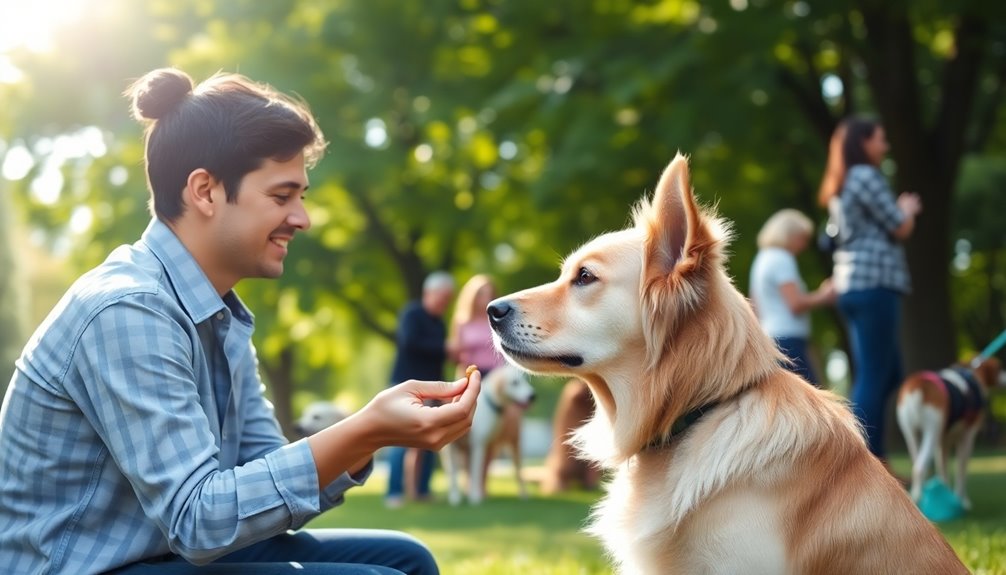
When you're facing challenges with your dog's behavior, seeking professional help can make a big difference.
Choosing the right trainer and considering group classes can enhance both your training experience and your dog's social skills.
With the right guidance, you'll see progress faster and strengthen your bond with your furry friend.
Choosing the Right Trainer
How can you find the right trainer for your dog? Start by looking for a professional dog trainer who uses positive reinforcement techniques. This approach isn't only effective but also endorsed by veterinarians.
Here are some tips to help you choose:
- Research trainers and read reviews from dog owners.
- Ask about their experience with specific behavioral issues.
- Inquire about their training philosophy and methods.
- Consider one-on-one sessions for personalized attention.
- Look for training classes that encourage socialization.
Selecting the right trainer can make a significant difference in your dog's behavior and your overall experience.
With the right guidance, you'll be on your way to a well-behaved furry friend!
Benefits of Group Classes
Group classes offer a fantastic opportunity for your dog to learn in a structured environment while socializing with other dogs and people. These classes promote positive reinforcement, enhancing your dog's adaptability and confidence. With guidance from professional trainers, you'll discover effective training techniques tailored to address specific behavioral challenges.
| Benefits | Description | Why It Matters |
|---|---|---|
| Socialization | Interaction with other dogs and people | Reduces fear and anxiety |
| Consistency | Uniform commands across family members | Enhances understanding |
| Distraction Training | Learning with various distractions | Helps generalize commands |
Frequently Asked Questions
How to Train a Dog to Have Good Behavior?
To train your dog to have good behavior, start by using positive reinforcement. Reward your dog with treats or praise right after they do something right.
Keep your training sessions short, around five minutes, to keep things fun and engaging. Be consistent with commands across all family members to avoid confusion.
Experiment with different rewards to find what motivates your dog the most, and gradually introduce distractions to enhance their adaptability.
What Is the 1/2/3 Dog Training Method?
The 1/2/3 Dog Training Method is a structured approach that helps you teach your dog commands effectively.
You give a command just once, then wait three seconds for your dog to respond. If they don't, you take action. This method reduces confusion and encourages your dog to listen carefully.
Remember to use positive reinforcement immediately after your dog complies, strengthening their understanding and building a strong bond between you both.
Consistency is key!
How Do You Discipline a Dog That Won't Listen?
Imagine trying to have a conversation in a noisy room; it's tough, right?
When your dog won't listen, first check for distractions around them. Use positive reinforcement—reward them immediately for good behavior to create a strong connection between actions and rewards.
Keep commands consistent across your family, and break training into short, focused sessions.
If problems persist, consider seeking professional help to guide you through tailored strategies that work for your dog.
What Is the 3 Second Rule in Dog Training?
The 3 Second Rule in dog training means you should reward your dog within three seconds of them performing a desired action.
This quick reinforcement helps your dog clearly connect their behavior with the reward, making it easier for them to learn.
If you wait too long, your dog might get confused and associate the reward with something unrelated.
Conclusion
So, you've learned all these tips for training your dog, but let's be real—your pup probably knows how to push your buttons better than you do! Just when you think you've mastered positive reinforcement, they'll find a way to make you question your sanity. But don't worry; with a sprinkle of patience and a dash of persistence, you'll both figure it out. After all, who's really training whom here? Keep at it, and enjoy the journey!

